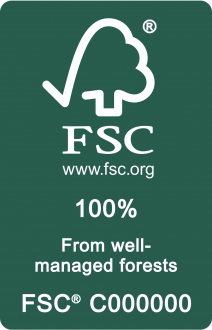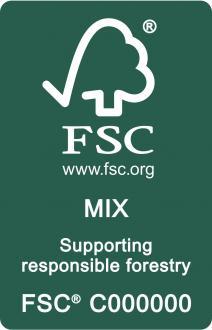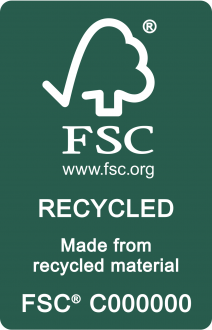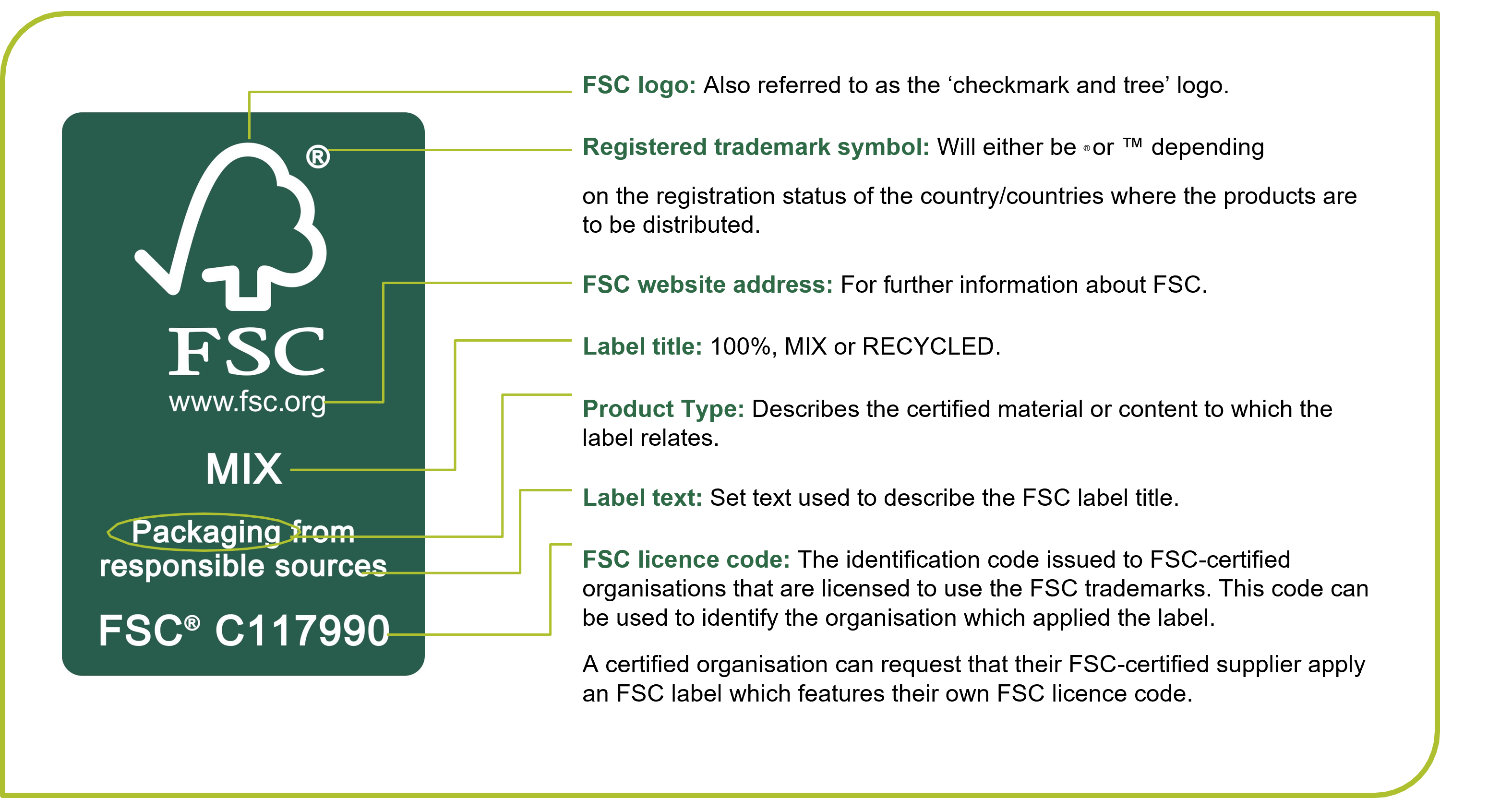
A small label making a big impact
When you purchase FSC-labelled products, you’re helping forests, and the people that rely on them, thrive by supporting:
Zero deforestation
Trees are harvested responsibly so there is no net loss of forest over time. Forests with irreplaceable values, such as old-growth forests, are identified and maintained. Reversing deforestation and maintaining irreplaceable forests are crucial to fighting climate change.
Fair wage and work environment
All workers are provided with proper training, adequate safety protocols, and fair wages.
Support the change from preservation to conservation
Plant and animal species are protected.
Community rights
Local communities living in and around forest areas are consulted, and their legal and cultural rights to land and forest resources are respected.



FSC 100%
All materials used come from responsibly managed, FSC-certified forests. Products with the FSC 100% label contribute most directly to our mission to ensure thriving forests for all, forever.
FSC RECYCLED
The product is made from 100 per cent recycled materials. Using recycled material makes the most of precious forest resources and reduces the pressure to harvest more trees.
FSC MIX
The product is made with a mixture of materials from FSC-certified forests, recycled materials, and/or FSC-controlled wood. While controlled wood doesn’t come from FSC-certified forests, it mitigates the risk of the material originating from unacceptable sources.

Check for the tree
We certify more than just paper products or furniture. Look for the FSC label when you shop. You’ll find it in more places than you might think.
- Tyres
- Sports equipment like skis and wetsuits
- Clothing and shoes
- Furniture and home décor
- Paper products, packaging, tissue, and coffee cups
- Books and art supplies
- Timber
What's in a Label?

FAQs
-
Why are there three FSC labels?
The great thing about the FSC on-product labels is that once you know about them, you will see them everywhere.
But the sourcing of wood is complex, and we need to carefully track how products get from forest to store.
The more you choose FSC-certified products, the more companies will want to meet that demand and will work to be become FSC-certified.
Whichever FSC label is on your product, you can be sure that you’re purchasing a product that supports responsible forest management. So keep an eye out for the FSC label on your next trip to the supermarket, furniture store, or coffee shop.
We all make choices every day – and now, when you see any of the three FSC labels, you can make a choice that helps take care of the world’s forests.
-
Why allow mixing?
Ideally, it would be unnecessary to mix wood from FSC-certified forests or reclaimed materials with wood from forests that aren’t FSC certified but controlled. However, in many cases mixing is currently the only feasible way for companies to make FSC-certified products.
- Firstly, a lot of producers source their materials from areas where there are both FSC certified and non-certified forests, and although many of these companies are committed to sourcing FSC 100%, the FSC-certified forests in their “wood baskets” aren’t large enough to supply the raw materials to make FSC 100% products.
- Secondly, mixing is needed because most sawmills as well as the pulp and paper sector operate in a way which does not allow the segregation of FSC certified and non-FSC certified material in the production. And as the exclusive sourcing of FSC-certified material is currently not possible due to above supply constraints, without mixing most of the industry would not be able to produce FSC-certified and labelled products at all.
FSC is working hard to achieve an increase in the area of FSC-certified forests and the share of FSC 100% or FSC Recycled products in the market. In the meantime, the option to mix is more or less unavoidable.
-
Does mixing support responsible forestry?
Absolutely! Mixing allows more manufacturers to participate in the FSC system and offer FSC-certified products. In turn, increased supply and visibility allows for growth in demand. Finally, growing demand gives more forest owners and managers a reason to improve their management practices and move towards FSC certification. In the meantime, mixing allows available FSC supply to get to the market, when otherwise much of it wouldn’t.
FSC controlled wood is a first step to improve forest management because it places restrictions on the procurement of non-FSC certified wood. FSC’s controlled wood standard mitigates the risk of materials from unacceptable sources being included in FSC MIX products. This helps to address significant problems like illegal logging, human and traditional rights violations and deforestation.
-
Does FSC certification mean that all products by the company selling the product are FSC-certified?
Any company that wants to add the FSC label to any of the products it makes must first receive chain of custody certification. This certification proves it is sourcing materials from FSC-certified forests, recycling and/or controlled sources and is following FSC-defined best practice throughout the production process and supply chain. But it does not mean that all products they produce are comprised of these materials.
Only products that use FSC-certified materials can carry the FSC on-product label. You still need to look for the FSC label on individual products to find out which are FSC-certified and which are not.
-
How can certificate holders download the label?
The Trademark Portal allows certificate holders to download the FSC labels in over 60 languages.
Check out the video tutorial to see how to generate and download the FSC label.